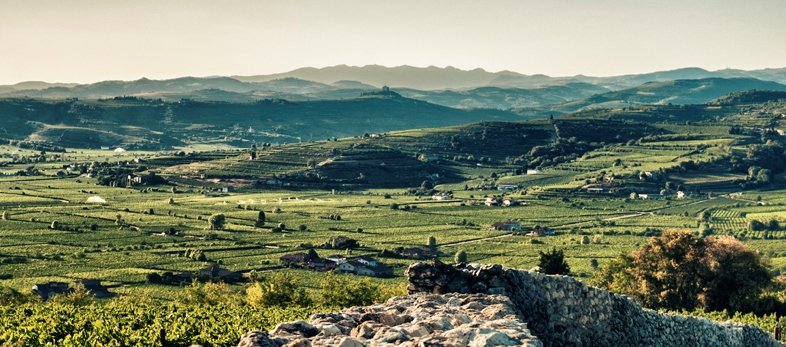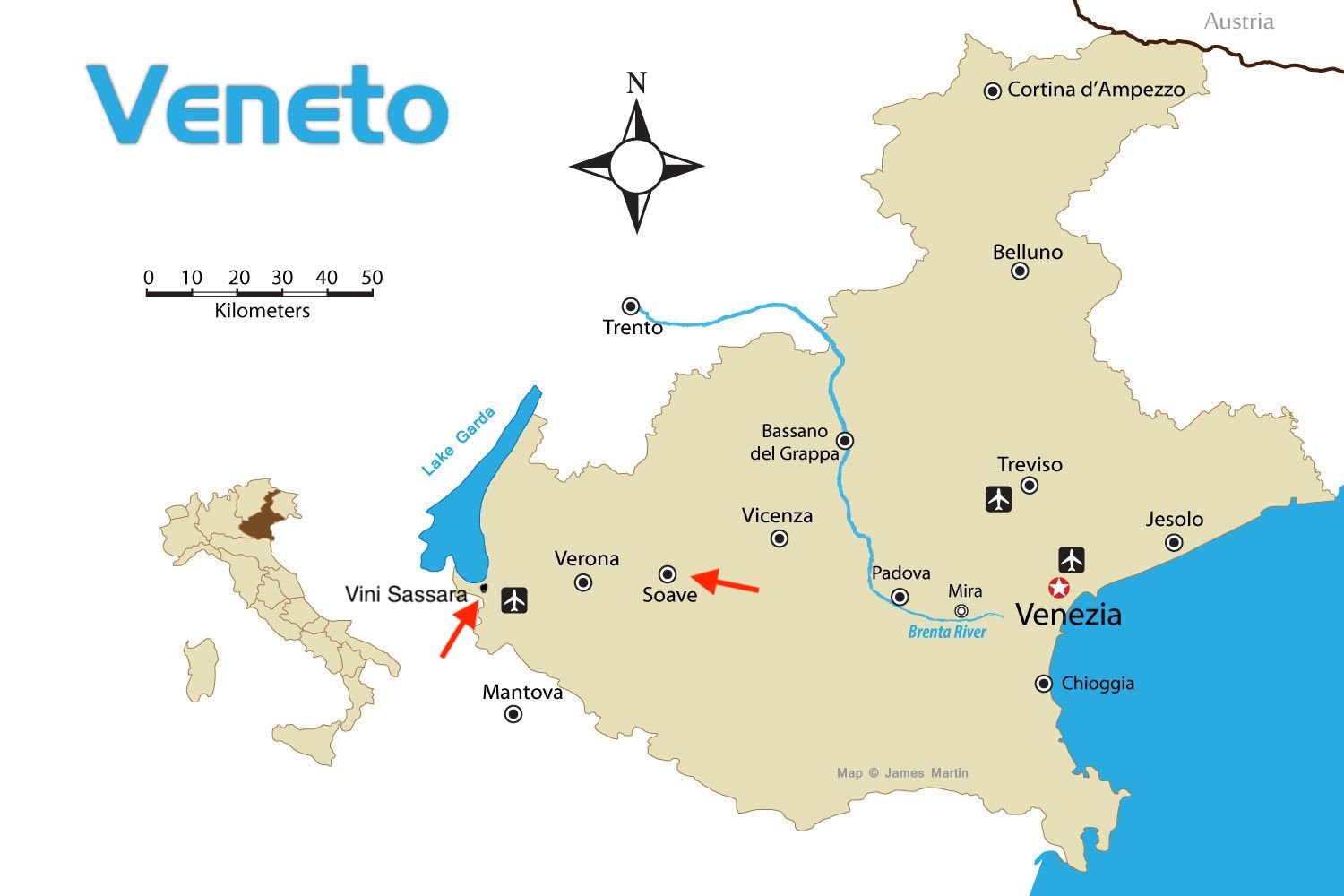• July Cork Club •
Garganega!
Here’s how some wine stories begin - on a quest. My husband brought home a bottle of wine from the bargain bin, and it was so good! It was a Soave from Inama (a producer), a wine I’d never had before. It turns out, you can’t get wines from Inama in Maine any more (which is probably why it was in the sale section). I set out to find another Soave as delicious as that one. Soave was all the rage in the 70’s and many places began to crank out quantity, not quality. Soave became a bit of a joke, and fell out of fashion. I tested wines from several producers before finding one I liked, and it’s on the shelves in the store: Balestri Valda Soave Classico. For the Cork Club, I thought I’d try one more, a well-reviewed wine from Suavia - it’s delicious. The two wineries are a 7 minute drive from each other.
The view near Suavia Winery.
I’d heard of Soave, but not the grape from which it’s made: Garganega. What a strange and wonderful word. So when it showed up in an online tasting of orange wines I participated in, I was excited. Vini Sassara is a small wine producer (just under 35 acres) in Veneto, and they make “natural” wines.
The Coconar from Vini Sassara is technically an “orange” wine - a white wine that is left on the grape skins, giving it a slight color and a bit more grip. Orange wine falls into the category of “natural” wines. Natural wine isn’t new. It’s the Original: grow grapes with little-to-no intervention, press grapes, let them ferment, bottle the wine. There are producers all over the world who are going back to wine’s original processes for all kinds of good reasons: it’s better for the environment, it expresses the terroir thereby making a unique product, which can be strange and thrilling or weird and off-putting.
The interest in natural wines is a bit charged for some people. There are good reasons, they say, why wine production uses controls such as pesticides, commercial yeast, added acid and sugar, and sulfites (some natural winemakers use very small amounts of sulfites - it makes sure the wine tastes the same as when it was bottled).
So! It’s a wide world of wine out there, people!!
Stefano Bertaiola tending the vines at Vini Sassara
How does one grape, from essentially the same region, using different approaches to treatment, express itself?
I hope you enjoy tasting these two wines and seeing how they are similar and different!
What to Eat?
I contacted Alessia and Stefano Bertaiola from Vini Sassara to find out what they most enjoyed eating with the Coconar and they replied! Alessia suggested spaghetti with sardines or bottarga.
https://www.thespruceeats.com/lemon-sardine-pasta-recipe-4163907
Another great choice would be creamy Caulifower Soup.
https://cookieandkate.com/creamy-roasted-cauliflower-soup-recipe/





